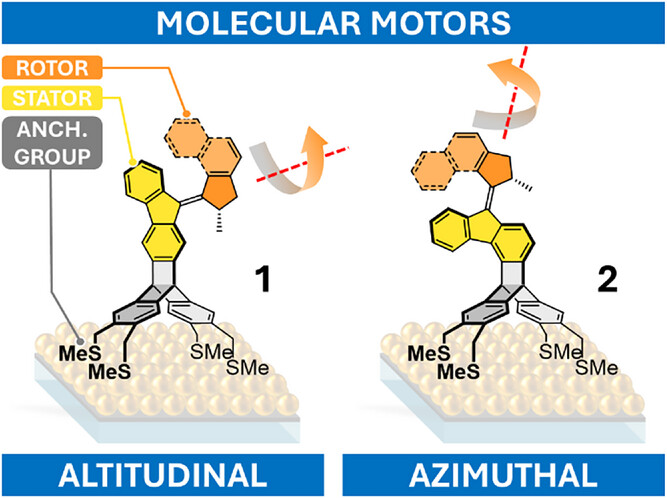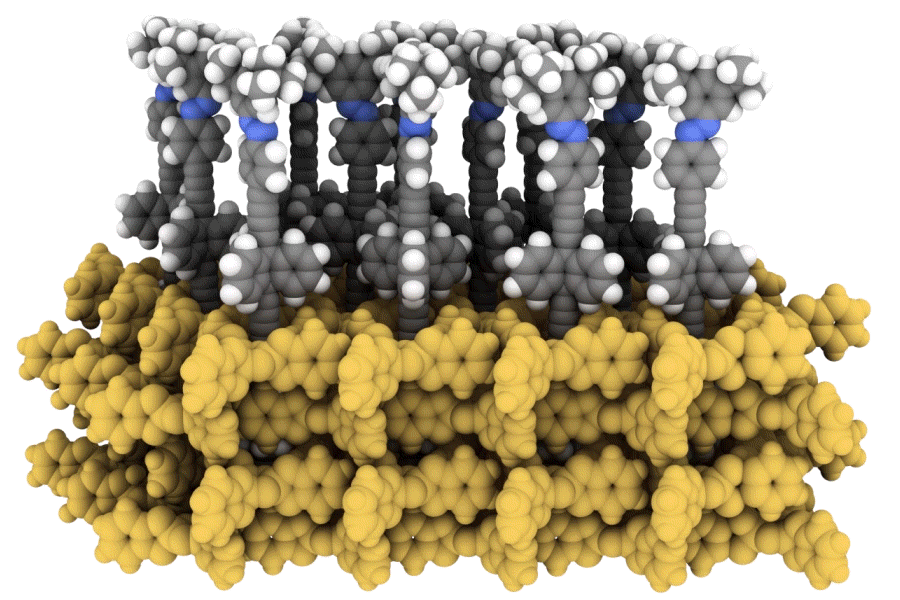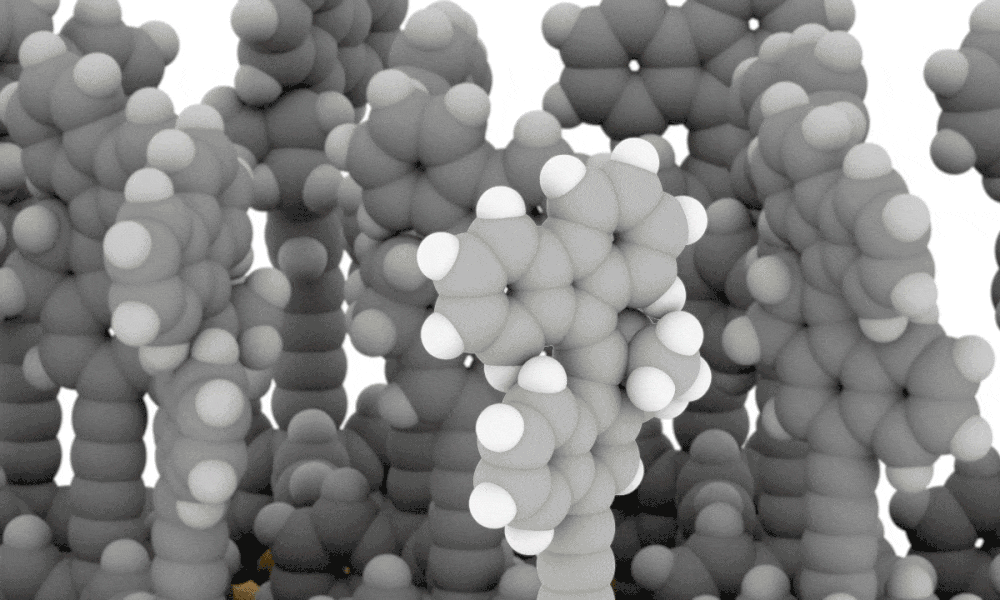IOCB researchers take a key step toward fully controllable molecular machines

A research team at IOCB Prague led by Jiří Kaleta has described a new concept for light-driven molecular motors that remain fully functional even after being anchored to a metal surface, where they continue to perform controlled rotary motion. The scientists have thus overcome one of the main obstacles on the road to fully controllable molecular machines – a development expected to have a major impact on the creation of intelligent materials, among other applications. The study provides deeper insight into the control of motion at the nanoscale. The paper was published in the journal Angewandte Chemie International Edition.
The study of molecular motors is among the most fascinating areas of contemporary chemistry and nanotechnology. Comprising only a few dozen atoms, these machines can move or rotate in a precisely defined direction when exposed to an external stimulus, such as light. The team at IOCB has developed two types of so-called four-legged motors attached to a rigid triptycene base. Triptycene is a three-dimensional structure that holds the stationary part of the motor slightly above the surface, allowing the rotor to move freely and in a precisely controlled manner. Upon exposure to light, the rotor first makes a partial turn and then completes the rotation through the influence of heat, resulting in a full, controlled 360° rotation. Kateřina Bezděková, the first author of the study and a member of Kaleta’s research group, explains: „Our motors are designed like building blocks, making them easy to adjust for different applications. We show that controlled motion at the molecular level can not only be achieved but also modified.”
Jiří Kaleta’s team succeeded in overcoming one of the major technical challenges: molecules attached to solid surfaces often lose their ability to move due to excessively tight contact with the substrate. Thanks to the innovative design, the motors remain mobile under all conditions. “By using a rigid triptycene base, we managed to solve several problems,” explains Jiří Kaleta. “Among other things, we effectively decoupled the photoactive part of the motor from the surface. As a result, it retains its mobility and can be easily controlled by light.”
The results from IOCB Prague pave the way for the practical use of molecular machines, for example in the development of intelligent materials, photoactive switches, or surface sensors. “Every step that improves our ability to control motion at the atomic level brings us closer to the time when molecular machines will perform precisely defined tasks – just like the machines we know from the macroscopic world, only a billion times smaller,” adds Jiří Kaleta.

Original article
- Bezděková, K.; Severa, L.; Kaletová, E.; Varga, K. M.; Mašát, M.; Wu, L.; Jiang, J.; Císařová, I.; Kaleta, J. Surface‐Decoupled altitudinal and azimuthal Triptycene‐Fused tetrapodal molecular motors. Angew. Chem., Int. Ed. 2025. https://doi.org/10.1002/anie.202513922







